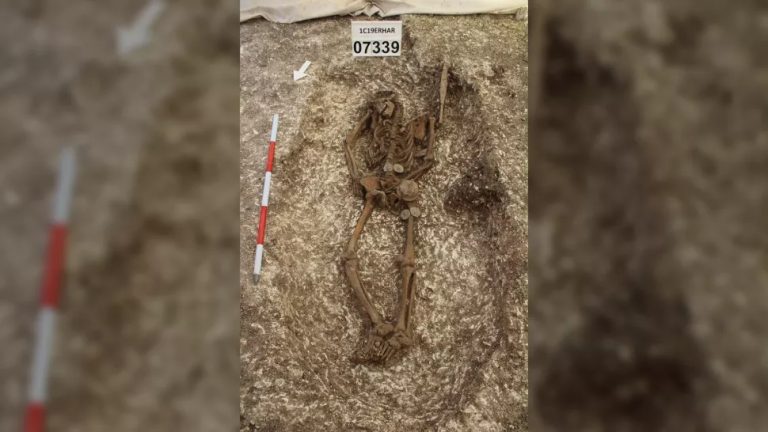A wealthy pagan burial ground, dating from the first years of the Anglo-Saxon invasion of Britain during the fifth century A.D., has been uncovered near London ahead of a high-speed rail project, known as High Speed 2 (HS2).

The new discoveries, which include more than 100 skeletons, are among the most important archaeological finds made along the HS2 route, which will eventually link the English cities of London, Birmingham and Manchester. Other findings in recent years include a Roman market town; dozens of decapitated skeletons and a 2,000-year-old wooden pagan idol, Live Science previously reported.
“When we find Anglo-Saxon cemeteries, they’re likely to be a few individuals, or sometimes 20 or 30,” Rachel Wood, the lead archaeologist for HS2 contractor Fusion JV, told Live Science. “But here we’ve got 141. It’s not the biggest ever, but it’s certainly up there.”
Personal grooming kits with tweezers and spoons for removing ear-wax were also found in many of the graves; and some of the objects, such as amber beads and glᴀss drinking vessels, were probably brought to Britain from continental Europe. The high-status and expensive grave goods suggest that whoever was buried at the site, which looks out over the vast and flat lands of Aylesbury Vale to the north, belonged to a wealthy Anglo-Saxon community, Wood said.
It may even have been the final resting place of a single affluent landowning family over several generations. “It’s likely that everybody else in their community was buried somewhere else,” and not at this newfound burial ground, she said. “They clearly seem to have chosen a spot to bury the wealthy.”

Here we see a human male spine and part of a pelvis. The 4th vertebrae from the bottom has been moved to show where the tip of a spear (also pictured) was embedded in the bones of the spine. (Image credit: HS2)
nglo-Saxon lands
The burial ground near the town of Wendover is one of the earliest traces of Anglo-Saxon habitation anywhere in Britain. The later graves date from the sixth century, but the earliest date from the fifth century — maybe only a few generations after the end of direct Roman rule in about A.D. 410.
By that time, several armies garrisoning the Roman province of Britannia, in the regions that are now England and Wales, had been withdrawn to fortify Gaul against rebellions and invasions by the barbarian Germans. After that, much of the region reverted to indigenous Christian “Romano-British” rule, but it came under attack after about A.D. 440 as the pagan Anglo-Saxons from northern Europe started to settle there.

The Anglo-Saxons buried at Wendover were definitely armed — the grave goods included an iron sword, 15 spearheads and the remains of seven shields, Wood said. A metal point, probably the tip of a spear, was found in the spinal bones of one man and seems to have killed him; reconstructions suggest it came from a blow to the front.
But there was no other evidence that the people buried there had lived a violent life of frequent fighting with the Romano-British, Wood said.
The excavations at the burial ground have also turned up 51 knives, which might be interpreted today as weapons, but at that time were commonplace. “You’d look at that today and think if a person has been buried with a knife, then that must be a weapon,” she said. “But it’s how they ate — forks were not a thing, and they all had small eating knives.”
Source: pahilopahilonews








